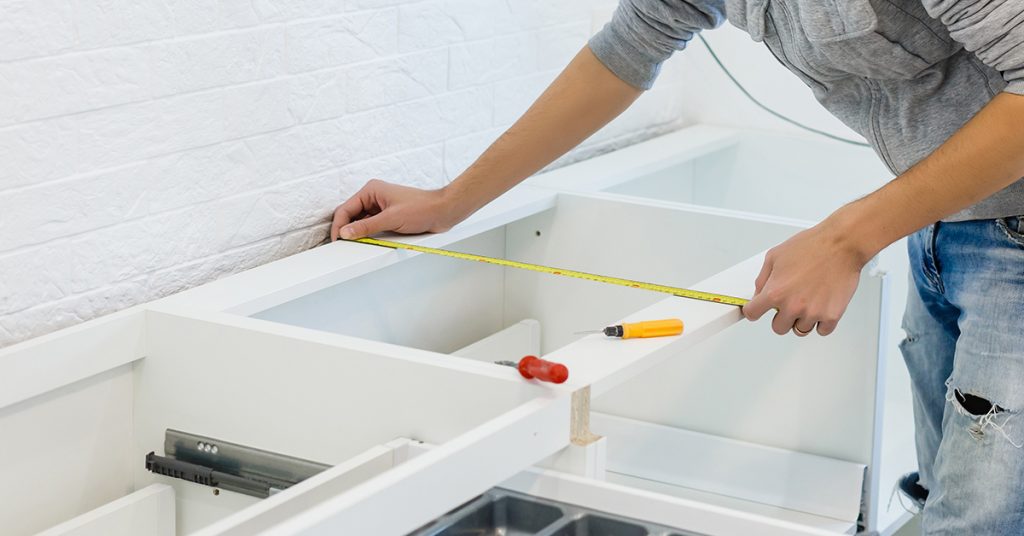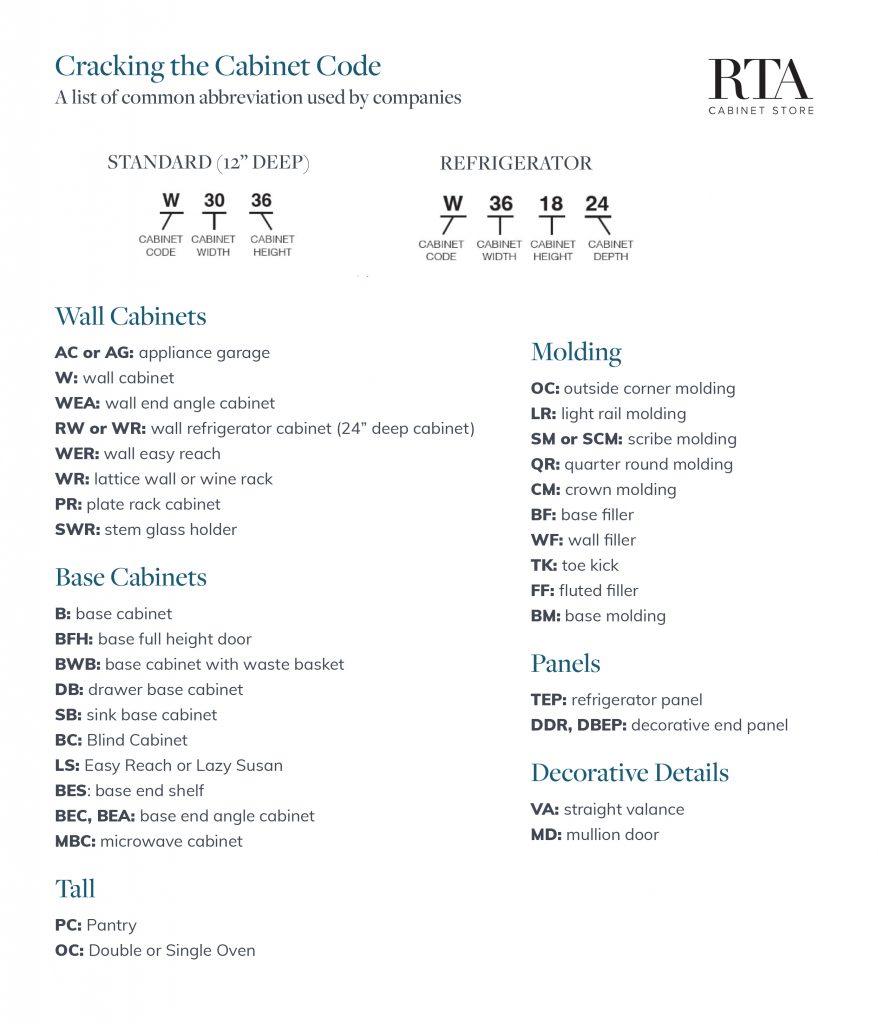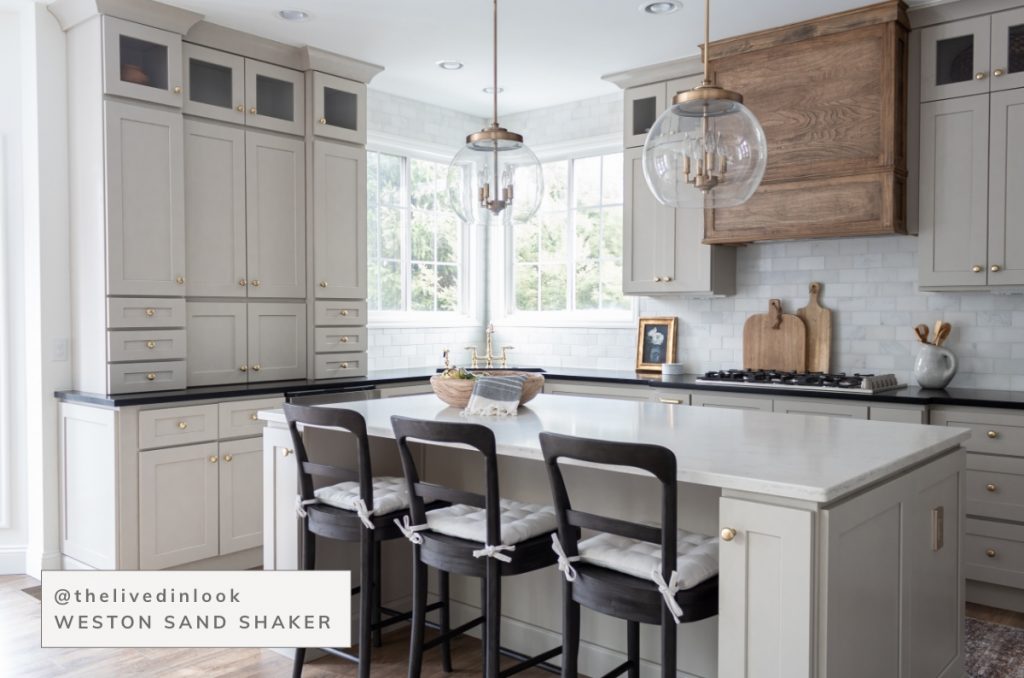Understanding Dimensions, Heights, and Nomenclature
Kitchen cabinets come in a variety of sizes, and if you’ve ever tried to decipher a cabinet specification sheet, you know it can feel like cracking a secret code. From cryptic abbreviations to standard dimensions, we’re breaking it all down so you can confidently choose the right cabinets for your kitchen.
Standard Kitchen Cabinet Dimensions
Before we dive into the lingo, let’s cover the basics of kitchen cabinet sizes. Understanding these standard dimensions will help you interpret cabinet codes more easily:
Base Cabinets
- Height: 34.5 inches (without countertop)
- Depth: 24 inches
- Width: Varies from 9 to 48 inches in 3-inch increments
Wall Cabinets
- Height: 30, 36, or 42 inches
- Depth: 12 inches
- Width: Varies between 12 to 36 inches
Tall Cabinets (Pantry or Utility)
- Height: Typically 84 or 96 inches
- Depth: 12 or 24 inches
- Width: Commonly 12, 24, or 36 inches
These dimensions provide a standard guide, but always check manufacturer specifications before purchasing.

Kitchen Cabinet Heights and Installation Standards
To ensure functionality and aesthetics, cabinets follow standard installation guidelines:
- Base Cabinet Heights: Standard height is 34.5 inches, but with a countertop, the total height is 36 inches.
- Wall Cabinet Height from Counter: The space between the countertop and wall cabinets is typically 18 inches.
- Kitchen Unit Height: When combining base, wall, and crown molding, standard kitchen cabinet heights can range from 84 to 96 inches.
Choosing the Right Cabinet Heights for Your Kitchen
Different factors influence the height of your cabinets, including ceiling height, design preference, and storage needs. Here are a few things to keep in mind:
- Standard Kitchen Cabinet Heights: If you have 8-foot ceilings, 36-inch or 42-inch wall cabinets work well. For taller ceilings, adding stacked cabinets can maximize storage.
- Kitchen Cabinet Height from Counter: Ensuring an 18-inch clearance maintains functional workspace and prevents a cramped look.

Deciphering Cabinet Nomenclature: Basics
When shopping for cabinets, you’ll often encounter abbreviations and numeric codes. Here’s what they mean:
- B15: A base cabinet that is 15 inches wide.
- W2430: A wall cabinet that is 24 inches wide and 30 inches tall.
- SB30: A sink base cabinet that is 30 inches wide.
- 17x40x35 Cabinet Dimensions: These numbers often indicate width, height, and depth. For example, a 17-inch-wide, 40-inch-high, and 35-inch-deep cabinet may be used for specialty storage.
Understanding this nomenclature makes it easier to compare products and ensure they fit your space perfectly.
Cracking the Cabinet Code

Wall Kitchen Cabinet Codes
Let’s start with wall cabinets. The standard depth of wall cabinets is 12″, so they do not include that in the item number or code. Most wall cabinets will have the following format: W2430 In this example, the W identifies that it is a wall cabinet, 24 indicates the width of 24″, and the 30 indicates a height of 30″.
If the depth is not the standard depth of 12″ (like you might have for a cabinet over the refrigerator), you would see the depth at the end: W362424 would be a wall cabinet that is 36″ wide, 24″ tall, and 24″ deep.
Base Kitchen Cabinet Codes
For base cabinets there is a similar format, but the height and depth are always the standard of 34.5″ tall, and a depth of 24″. So the basic code for a base cabinet would be B15, which is a 15″ wide base cabinet, where B identifies that it is a base cabinet. For a sink base cabinet is would be SB30 (30″ wide sink base).
Where base cabinets get tricky is the corner cabinets. There are probably half a dozen codes (and different names) for a lazy susan cabinet: EZR or EZ (easy reach), LZ or LS (lazy susan), DCB or DC (diagonal corner base).
Vanity Bathroom Cabinet Codes
Vanity cabinet codes begin with V, followed by the cabinet width. Standard vanity cabinets are 21″ deep so this number is not included in the code. A code of V30 indicates a vanity that is 30 inches wide.

Making Sense of the Codes
Cabinet abbreviations and dimensions may seem overwhelming at first, but once you understand the standard sizes and codes, it becomes much easier to plan your kitchen layout.
Whether you’re looking for a kitchen base cabinet height or trying to determine the best kitchen unit height for your space, understanding cabinet dimensions and terminology will help you make informed decisions.
If you’re still unsure, consult our experts or browse our wide selection of ready-to-assemble kitchen cabinets to find the perfect fit for your home.










